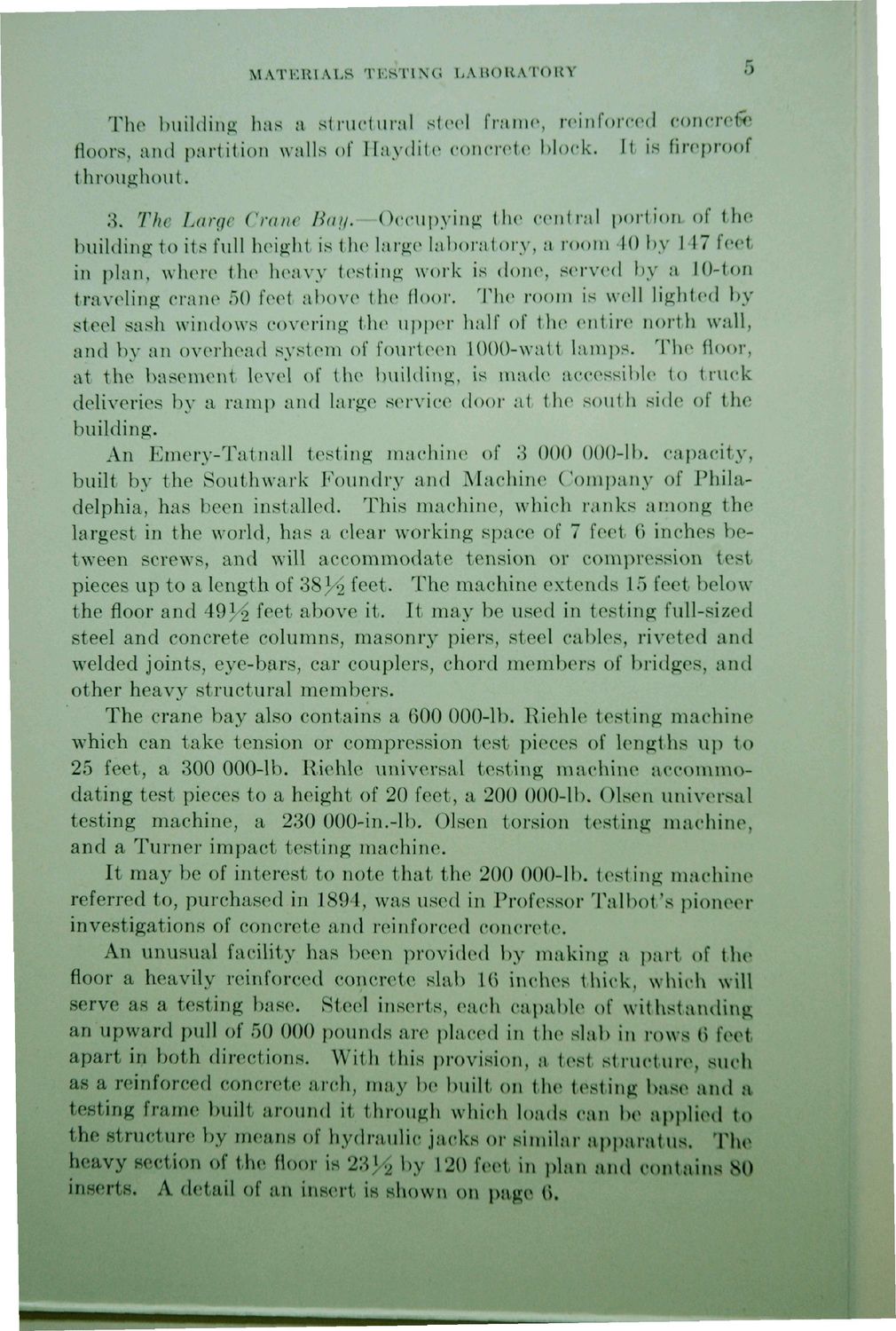| |
| |
Caption: Dedication - Materials Testing Lab Dedication
This is a reduced-resolution page image for fast online browsing.

EXTRACTED TEXT FROM PAGE:
MATERIALS TESTING LABORATORY * > The building has a structural steel frame, reinforced concrete floors, and partition walls of Haydite concrete block. It is fireproof throughout, 3. The Large Crane Bay. Occupying the central portion, of the building to its full height is the large laboratory, a room 40 by 147 feet in plan, where the heavy testing work is done, served by a 10-ton traveling crane 50 feet above the floor. The room is well lighted by steel sash windows covering the upper half of the entire north wall, and by an overhead system of fourteen 1000-watt lamps. The floor, at the basement level of the building, is made accessible to truck deliveries by a ramp and large service door at the south side of the building. An Emery-Tatnall testing machine of 3 000 000-lb. capacity, built by the Southwark Foundry and Machine Company of Philadelphia, has been installed. This machine, which ranks among the largest in the world, has a clear working space of 7 feet 6 inches between screws, and will accommodate tension or compression test pieces up to a length of 38-^ feet. The machine extends 15 feet below the floor and 49% feet above it. It may be used in testing full-sized steel and concrete columns, masonry piers, steel cables, riveted and welded joints, eye-b^rs, car couplers, chord members of bridges, and other heavy structural members. The crane bay also contains a 600 000-lb. Riehle testing machine which can take tension or compression test pieces of lengths up to 25 feet, a 300 000-lb. Riehle universal testing machine accommodating test pieces to a height of 20 feet, a 200 000-lb. Olsen universal testing machine, a 230 000-in,-lb. Olsen torsion testing machine, and a Turner impact testing machine. It may be of interest to note that the 200 000-lb. testing machine referred to, purchased in 1894, was used in Professor Talbot's pioneer investigations of concrete and reinforced concrete. An unusual facility has been provided by making a part of the floor a heavily reinforced concrete slab 16 inches thick, which will serve as a testing base. Steel inserts, each capable of withstanding an upward pull of 50 000 pounds are placed in the slab in rows 6 feet apart iij both directions. With this provision, a test structure, such as a reinforced concrete arch, may be built on the testing base and a testing frame built around it through which loads can be applied to the structure by means of hydraulic jacks or similar apparatus. The heavy section of the floor is 2 3 ^ by 120 feet in plan and contains 80 inserts. A detail of an insert is shown on page 6.
| |